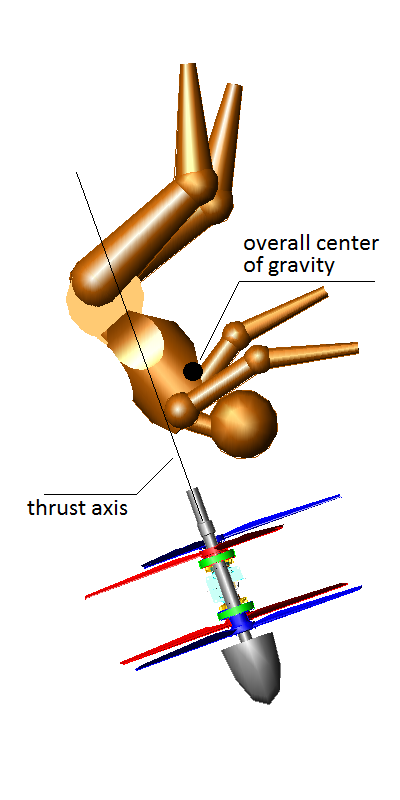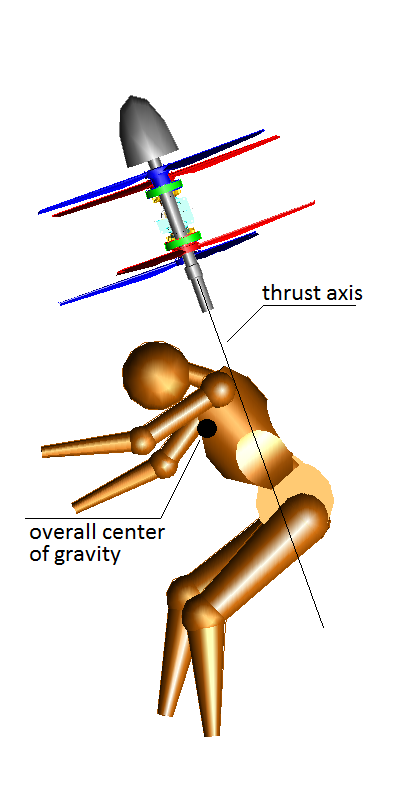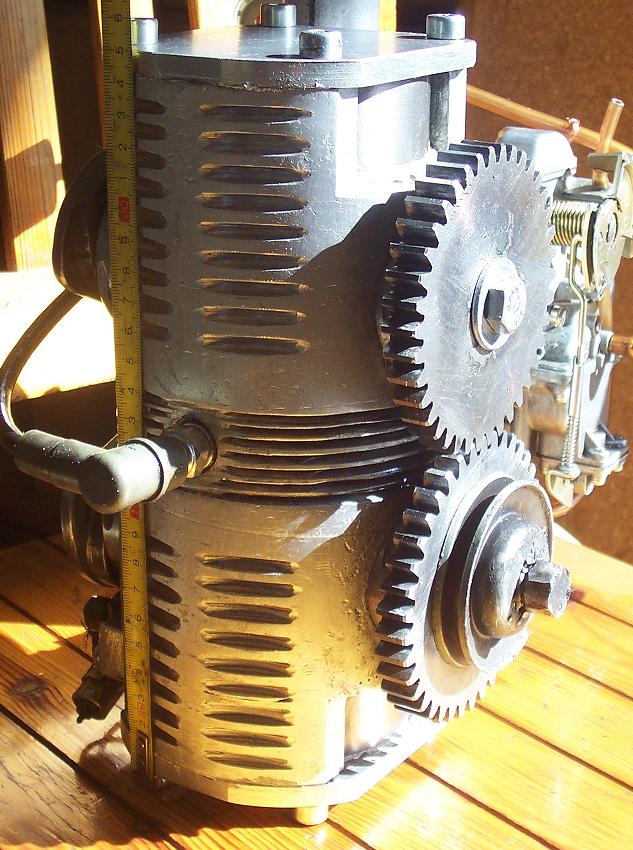Hello Rodak.
you write:
”What I don't agree is that it is controllable by moving legs and arms while strapped into a rigid frame.
. . .
I'm curious, if the flyer becomes inverted how does the pilot pull out before augering in?”
Let’s simplify the problem.
Think of an astronaut wearing two small rockets rigidly secured on the left and right sides of torso / back.
Suppose that when the astronaut is at straight posture the thrust from the two rockets is parallel to astronaut’s spine.
Suppose the astronaut is 500m above the ground of the moon and is falling head-down, with the rockets pushing straight downwards. Astronaut’s body is at straight posture. The thrust passes from the center of gravity.
If astronaut’s body stays at the straight posture, the accelerating fall will continue till hitting the ground.
But the astronaut can easily change from “straight” head-down to fetal posture:

displacing the centrer of gravity away from the thrust (to the right in the photo).
Now the thrust force F is eccentric from the centrer of gravity.
According physics, the thrust force F is
equivalent to an equal and parallel force F’ passing from the center of gravity, plus a torque T equal to the thrust force F times its eccentricity X from the center of gravity.
Equivalent means that the result is absolutely the same either you keep the F force, or you replace it by the force F’ and the torque T.
While the force F’ continues to accelerate the astronaut towards the ground, the torque T turns the astronaut (together with the rockets secured on astronaut’s body) about the center of gravity (COUNTER-clockwise in the photo).
I.e. the torque T turns the thrust direction.
When the astronaut has turned for 180 degrees:

the thrust is vectoring upwards decelerating the fall and then accelerating the astronaut upwards.
The astronaut has to restore to straight posture to cancel out the torque T and prevent further turning.
Is there any objection to the previous?
If not:
In comparison to the astronaut’s flight (empty space, no air), the correction from inverted flight:

to upwards flight:

of the Portable Flyer happens in the air, which means the pilot can exploit the aerodynamic forces acting on his body to turn faster.
It is a combination of the "Weight Displacement Control" and of the "Aerodynamic Control"
See how fast the wind-dancer (youtube video) turns from “head down” to “head up” based exclusively on the aerodynamic forces applied on her body.
- And talking for the wind-dancer, it is worth to note here:
the “thrust” force acting on the body of the wind-dancer (i.e. her weight) is permanently passing from her center of gravity (this is the definition of the center of gravity); if she was falling in the empty space (say in the moon), she could not start turning (if she was not turning before) and she could not stop turning (if she was initially turning).
Thanks
Manolis Pattakos




